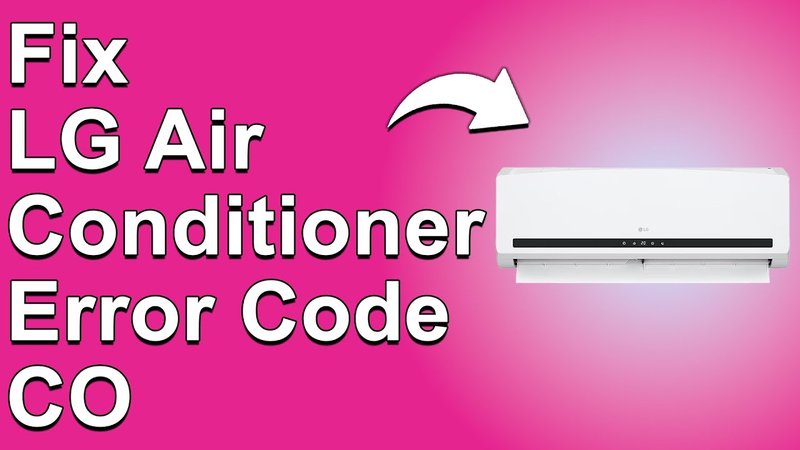
The SE error in LG air conditioners is a signal that something is amiss with your unit’s temperature sensor. Think of the temperature sensor as the device’s internal thermometer. It’s like when you’re feeling feverish, and you use a thermometer to check if you have a fever. If the thermometer is non-functional, you can’t truly know what’s wrong with your body. Similarly, a malfunctioning sensor disrupts the ability of your air conditioner to maintain the desired temperature in your home effectively. Ignoring this might lead to more than just discomfort; it could cause your system to work inefficiently, much like trying to run a marathon with the wrong shoes.
Understanding the SE Error Code in LG Air Conditioners
So, what causes this pesky SE error, anyway? In simple terms, the SE error pops up when there’s a problem with the air conditioner’s sensor that measures room temperature. This sensor plays a crucial role in ensuring that your home stays at the temperature you set on your thermostat. It’s as if your air conditioner is “blind” to the room’s climate without a working sensor. The causes for this error can vary, but they often lie in a disconnected or faulty temperature sensor.
Imagine this: you’re driving your car without a working speedometer. Sure, you could still drive around, but you wouldn’t have an accurate gauge of your speed. As a result, you might drive too fast or slow without even realizing it. A malfunctioning sensor in your air conditioner is quite similar. It prevents the system from reading and responding to temperature changes correctly, leading to inefficient cooling and potential long-term damage to your unit.
Over time, if the SE error isn’t addressed, it might cause the air conditioner’s compressor to overwork itself as it tries to compensate for the inaccurate temperature readings. This can lead to higher energy bills because the unit is running harder than it needs to. Plus, this extra strain on your system might shorten the lifespan of your air conditioner in the same way that consistently driving a car with a faulty engine light might lead to bigger mechanical problems down the line.
Consequences of Ignoring the SE Error
Let’s delve into what might happen if you decide to ignore that blinking SE error code. The immediate consequence is, of course, discomfort. Your air conditioner may fail to keep your home at the right temperature, leaving you and your family hot and bothered during those sweltering summer months. Beyond mere discomfort, though, overlooking the SE error can have more serious repercussions.
For one thing, your air conditioner’s efficiency will take a noticeable hit. A system struggling with temperature readings will often work overtime to stabilize the climate, leading to increased wear and tear. Imagine running a marathon without knowing your pace; you’ll likely tire out sooner or even injure yourself, right? Similarly, your air conditioner, when pushed beyond its limits, will start to break down more frequently, requiring costly repairs.
Moreover, ignoring the error can be costly on your wallet. An air conditioner that’s working harder than it should be is going to use up more electricity. This means higher utility bills, which could add up significantly over time. Also, the additional stress might lead to major component failures, such as the compressor—which is one of the most expensive parts to replace. So, while putting off the repair might seem like a viable option in the short term, it could lead to a costly repair or a complete system replacement in the future.
Next Steps: What to Do When You See the SE Error Code
So, now that you understand the potential pitfalls of ignoring the SE error, what should you do if you spot it on your air conditioner? First things first, don’t panic. While it’s important to address the issue, there’s no need to stress. The simplest step you can take is to consult your air conditioner’s user manual. It often contains troubleshooting steps you can try, like checking for loose connections or resetting the unit.
If you’re not comfortable tinkering with electronics, or if the issue persists despite following the manual’s instructions, consider calling a professional technician. They have the expertise to accurately diagnose and fix the problem. It’s like going to a doctor when you’re feeling under the weather. You trust their expertise to set things right, and the same logic applies here.
Finally, preventive maintenance is key. Schedule regular tune-ups for your air conditioning unit, much like regular health check-ups help you stay healthy. A technician can catch potential issues before they escalate, saving you from unexpected repair costs and ensuring your home remains a cool oasis all summer long.